- Home
- D. W. Patterson
Mach's Legacy
Mach's Legacy Read online
MACH'S
LEGACY
D.W. PATTERSON
Copyright © 2019 D.W. Patterson
All rights reserved.
2nd Edition
1st Printing - September, 2019
Cover - Copyright © Future Chron Publishing
Cover Image - © Bruce Rolff
No part of this book may be reproduced in any manner whatsoever without permission, except in the case of brief quotations for the purpose of review. For information please contact – [email protected]
This is a work of fiction. Names, characters, places and events are products of the author's imagination and should not be construed as real. Any resemblance to actual events and people, living or dead, is entirely coincidental.
Originally published as The Sixth Category.
DEDICATION
To Sarah
NOTE TO READER
The reader will note that the story in the mine on Earth takes place in the late 21st Century. The rest of the novel takes place in the mid 27th Century.
This book was originally published under the title The Sixth Category. It has been renamed and republished under its new name because it is closely tied to the two novels Mach's Metric and Mach's Mission in that they all occupy the same universe and have many of the same characters. In this sense the novels may be considered a trilogy to be read in the order Mach's Metric, Mach's Mission and Mach's Legacy.
If an accident triggers a phase transition of the vacuum through high-energy physics it could result in a sixth category risk. However, if civilization has a large spatial extent at that stage, the destruction would take relatively long to complete, making this scenario a whimper rather than a bang.
We should not blame civilization or technology for imposing big existential risks. Because of the way we have defined existential risks, a failure to develop technological civilization would imply that we had fallen victims of an existential disaster (namely a crunch, “technological arrest”). Without technology, our chances of avoiding existential risks would therefore be nil. With technology, we have some chance, although the greatest risks now turn out to be those generated by technology itself. - Nick Bostrom
“This is the way the world ends
Not with a bang but a whimper.”
T.S. Eliot – The Hollow Men
MACH'S
LEGACY
Chapter 1
Awannti was running as fast as he could through the Tiagi Biome, a boreal forest where spruce and northern pine grew thick. Awannti was constantly having to dodge tree trunks in his path. But he wasn't slowing down. He knew the Beleni, The Shining Ones, would not be far behind. Although it had been a spur of the moment decision Awannti had prepared by uploading as many augmentations as he could before he started. He hadn't been too picky either, not knowing which aug might be helpful where he was going. He had also grabbed his survival pouch before he took off.
As he ran Awannti couldn't help but think how he had gotten into this situation. At first he thought he was a perfect fit at the new campus. Everyone was friendly and interesting. They had come from all over the Earth to contribute to the common cause. That cause being to support the Beleni's goals and in return being allowed to build a new world for themselves.
The Earth had been a dead end for Awannti's ancestors. They had tried but that world run by artificial intelligence was a world where everyone had a fixed place and no one could change their place in society without the approval of the AIs. So Awannti's ancestors had fled to Belenos.
Born into the Beleni world, it had at first been exactly what Awannti wanted. Hard work was rewarded, creativity was encouraged. As he got older he quickly made a name for himself but it wasn't long until he noticed a problem. His world, the world he had hoped to build for himself, and the world the Beleni had promised him, was slow in taking shape. The Beleni were not as generous as he had thought. The more he worked the less time he had for himself and his personal goals. And no matter how much he worked it never seemed to be enough to get him nearer those goals. He started feeling trapped.
That was when he fled the campus and found himself running through the forest. Now all he could do was run. If the Shining Ones found him they would take him back and make it impossible for him to escape again, he had seen it done to others. He wanted anything other than to be captured.
All of a sudden as he was dodging another tree his feet slid from under him on the loose pine needles. He fell head first down the hill skidding on the needle carpeted ground. Fortunately the depth of the pine needles that made them so slippery on top also made them a cushion. Awannti was not hurt but lay still.
He listened for any sound that was unnatural to the forest, a sound that would signal the Beleni were near. Awannti lay there for several minutes listening and resting. Once he was certain there was no noise and his hard breathing had subsided he rose to continue. But now he wouldn't run in a panic but with a purpose. He would need to find water and a source of food if he was to live out here away from the campus.
He walked down the hill until it bottomed. There he turned to follow the hollow as it continued to snake downward. He hoped as he neared the end he would find a stream. After a walk of a mile or so Awannti heard the distant gurgling of running water. He picked up his pace and found the stream at the place where the hollow emptied into a deeper valley. Awannti ran to the stream and bent down. With a cupped hand he sipped the water. It was good. As he drank deeper from the stream he noticed his face in the water. He looked different somehow though it was hard to tell through the constantly rippling stream.
He washed his face and never mind his looks, he felt different. He felt free.
So now he had a source of water. He would follow the stream down the valley to where it became deeper and wider, there he hoped to find a source of food, fish.
Towards evening he was working his way through the brush alongside the ever widening stream when he heard a splash. He gained a perch from which to see the stream and watched. He saw a fish breach the surface. Awannti leapt with excitement. Now he would have food.
Awannti accessed the survival library he had uploaded. Of the dozen or so methods of catching a fish he chose the cane method because it was the simplest and required the least equipment to implement. He searched the shore for a suitable cane, not too thick and heavy, which would slow down his striking, but thick enough to hold up to the severe use he was preparing to put it through.
The cane selected, Awannti waded into the stream. The dimming light made it harder to see so he enabled his night vision aug. It worked perfectly. Awannti could see the fish not far beyond him and as one came close he struck. And missed. It was apparent the water bent the light just enough to cause his aim to be off. He adjusted his aug to compensate.
It took another few minutes until Awannti had stunned a fish sufficiently to catch it in his hands. It felt like it weighed at least a couple of pounds. He spent the rest of the failing light hunting for wood and kindling. Awannti chose an area close to the stream, a sandy area to set up his firewood. He would get the fire going before he prepared the fish.
He took from the pouch around his waste a fire starter cube. Stacking the firewood with the kindling at the bottom Awannti pushed the top of the cube and set it in the middle of the wood. Shortly smoke and flames came from the stack. Awannti would retrieve the fire starter cube later after the fire burned out.
Retrieving a second item, a knife, from the pouch, Awannti accessed a food prep aug and began cutting the fish along its length. He soon had one side of the fish separated from the bony skeleton. From this fillet he cut off the skin, he then washed the fillet in the stream and placed it on a rack made from several wooden sticks he had put on top of the firewood. He then
cut another fillet from the fish and cleaned it. By this time the fire had died down into a more uniform heat and Awannti allowed the second fillet to cook as he consumed the first. He finished eating the fish and laid down in the grasses near the stream. The first day and he had survived. He had food and water and soon he would have shelter. Awannti slept peacefully.
It was still dark and something had woken him. It was slow to register but he saw the glow coming from up stream. It wasn't a morning sunrise because that would come from over the hill behind him. It wasn't a morning glow anyway, it was something else.
About then Awannti jumped up from his grass bed.
The Shining Ones, he thought.
He was just about to run downstream when something stopped him. One of his augs had fired. He couldn't move. He was paralyzed, facing downstream with the light approaching from behind. He saw his shadow growing and becoming more sharply delineated. He was becoming sick with fear. The area around him had become bright as day, only with a bluish tint instead. He felt a prickle on the back of his neck. He was screaming inside as he vanished in a blink.
The AIs of Belenos had captured the runaway avatar. They would try to recondition him if possible and return him to the meta-verse to live a productive life. But if not possible he would have to be terminated. The light of the AIs also blinked out as they removed themselves from the simulated world they maintained.
Chapter 2
“Astronomers Detect 'Moses' Rod in the Sky” - The New Hope Sentinel, 6.11.2643.
“If It Ain't Natural What Is It?” - The Centauri Journal, 6.11.2643.
“Who's Up There? Friend or Foe?” - The Centauri Worker's Union, 6.11.2643.
Moses Jackson went by the name Jack. He was an astronomer with the Centauri Institute on a moon circling the Earth-like planet HR 383c in the star system HR 383. The moon went by the unofficial name Stargazer. It was airless and stable, a perfect platform for astronomy. Unlike the biologists on the planet's surface below Jack had no interest in gazing inward but only outward.
Going over the previous viewing run he was looking at the anomalies flagged by the astronomy AI. The AI usually tagged the anomaly with an identification. And the AI was usually right. Only in very rare cases was the anomaly flagged but not tagged. This was one of those cases.
Jack took one of the digitized pictures and pulled it into the analysis software. The software was supposed to highlight anything considered too out of the ordinary.
Too alien artifactish, thought Jack as he started the analysis.
Almost immediately the software highlighted a section of the image. Jack zoomed in on the area and saw what looked like a streak. A straight red line in space as if applied by a marker.
Well that's not suppose to be there.
He ran a further analysis on the image, an analysis that should find any scope or camera artifacts. None were flagged.
So it's really there, he thought with a slight chill.
Next he marked each end of the streak. The software would estimate the distance of the marked items from the Sun.
One end, which he started thinking of as the near end was estimated to be approximately forty-seven light years from the Sun, while the other end was estimated to be one-hundred thirty-eight light years from the Sun. So the streak was at least ninety light years long.
Now he would try to locate the nearest stars to those two points. The far end was located near the star 88 Pegasi. The near end was close to, Jack blinked, WISE 0735. Better known as Trilos after the Aggie War.
Jack knew that the Aggie War had occurred almost a hundred years before. He had studied about it in college. The war was caused by a schism in the AI family known as the Aggies.
Are they back?
Jack thought he should report this to someone, but who?
Sci-pedia - The Online Resource for Science - Interstellar Politics
By the beginning of the 22nd century the politics of the Solar System was centered on two groups. The Terran Federation was the successor to the old UN and eventually represented the Earth, Moon, Mars and some habitats in the Centauri System.
The Solar Federation originally started by the Martian Republic came to represent the smaller interests in the Solar System such as the Asteroid Belt, Titan and in the 25th century the habitats of the Star Way and the smaller space habitats of the Solar and Centauri Systems.
A third power center emerged when AGI (Artificial General Intelligence or Aggie) was developed and began managing the Earth and Mars for their respective governmental entities at the beginning of the 23rd century. The Aggies generally aligned themselves with the Terran Federation.
Except for a few minor skirmishes this balance of power held until a schism developed in the Aggie community and the Aggies of Belenos began their campaign of extermination . . .
Emmy Gibbs' great-great grandfather Elias Mach had won two Noble Prizes in Physics, one for developing the wormhole drive that nowadays was used by almost every space vessel. Emmy was following in his footsteps at Centauri University in the Centauri Two space habitat orbiting the star Centauri A.
Emmy was only eighteen and finishing her senior year of college at the top of her class. She had already applied and been accepted to graduate school in her chosen discipline, Astrophysics.
She was in the school's library viewing the latest journals and articles that her AI assistant had chosen for her. The report of the red line in space, which was now known as Moses' Rod after its discoverer, caught her eye. She remembered hearing about an experiment her grandfather Elias had performed in his lab here in Centauri Two many years before. She knew he had proved his theory, quite explosively as it turned out, but she needed to look up the article in his wormhole textbook before she could be sure that his experiment was linked to Moses' Rod.
She found the book and began reading. In the introductory pages of Chapter 24 she discovered what she was looking for:
Wormhole Physics 101, 8th Edition, by Dr. Elias Mach
Copyright 2640 C.E.- Chapter 24, Page 612
Long-Jump Wormholes
Introduction to Chapter 24
The longer a wormhole is kept open the greater the energy density in the wormhole dimension. This density leads to a tension that develops at what might be called the wall of the wormhole. This is the place where the repulsive gravity of the exotic matter and energy must balance the attractive force of the ordinary matter and energy of the transporting object.
This energy balancing is rapidly changing and leads to an immense stress and a variety of vibrational modes at frequencies beginning in the audible. These vibrational modes are similar to the modes found in a black hole between its event horizon and Cauchy horizon.
Some of this vibrational energy, which will be called shadow energy for reasons that will become apparent later, leaks or radiates away as gravitational energy into normal spacetime.
It will be shown that if a spaceship is close enough to “hear” (compact gravitational waves interacting with the hull of the ship causing it to resonate) this shadow energy then the ship will be close enough to have its three dimensional momentum affected. This is the frame dragging effect of General Relativity which is also seen around rotating black holes.
We call this location “in the shadow” of the wormhole.
Effects on the human body limit the direct use of wormholes to about seven and a half light-years (see Chapter 23). To get around this limit a ship has to use the frame-dragging effect to “ride” the shadow energy wave from the wormhole dimension. This effect acts on a ship in ordinary space when close enough to the wormhole dimension and propels it in ordinary space many times the speed of light. But no law of physics is broken because the ship is always traveling less than the speed of light relative to its immediate environment. It is spacetime itself that appears to travel at superluminal speeds. It can be likened to the period of inflation in the early universe when spacetime expanded rapidly . . .
But there are still two probl
ems with this method of propulsion. It is energy intensive, as it takes energy to open and keep open the long-jump wormhole and energy, in the form of unmanned masses shot into it, to cause the frame-dragging. And since a single ship cannot create a long-jump wormhole to just anywhere, networks have to be established and supported, adding to the cost.
Another problem is that when traveling through a wormhole instead of being dragged by it the time of travel is essentially instantaneous. On the other hand frame dragging has an upper limit to its speed and therefore takes a finite time. This is not a major problem now but could be in the future as longer and longer jumps are attempted.
One side-effect of the energy from the wormhole dimension leaking into ordinary space is that standing waves or ripples in spacetime are created close to the wormhole. The energy of these ripples can excite atoms and cause them to begin radiating in the visible spectrum. Beginning as a soft glow, eventually the light will get bright enough to be seen by the unaided eye, thus making the invisible corridor in the wormhole dimension visible in ordinary spacetime.
That's it, I'll bet we are seeing a wormhole being kept open.
She would have to contact that Moses guy.
Emmy eventually ran into Dr. Jackson at a meeting of the Centauri Science Association. Dr. Jackson had wormhole jumped his way back to the Centauri System to deliver a talk about his discovery which he deliberately did not call Moses' Rod. Emmy approached Dr. Jackson after his talk.

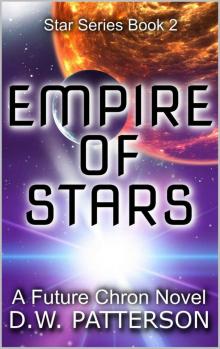 Empire of Stars
Empire of Stars Breakup
Breakup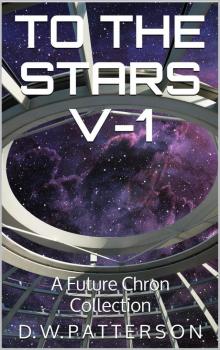 To the Stars V-1
To the Stars V-1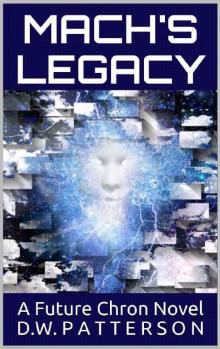 Mach's Legacy
Mach's Legacy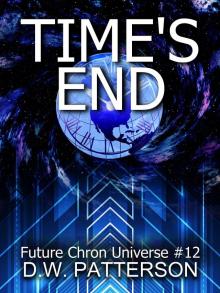 Time's End: A Future Chron Novel (Future Chron Universe Book 34)
Time's End: A Future Chron Novel (Future Chron Universe Book 34) Kuiper Station
Kuiper Station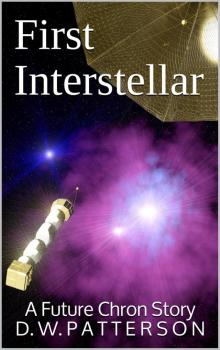 First Interstellar
First Interstellar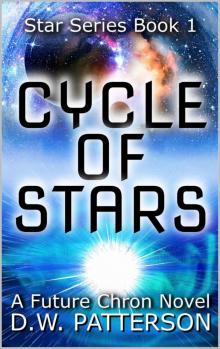 Cycle of Stars
Cycle of Stars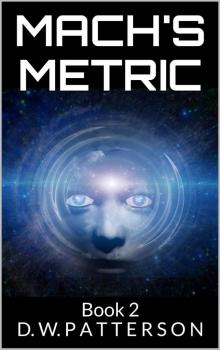 Mach's Metric
Mach's Metric Freedom From Want: A Future Chronology Short Story (Future Chronology Series Book 7)
Freedom From Want: A Future Chronology Short Story (Future Chronology Series Book 7)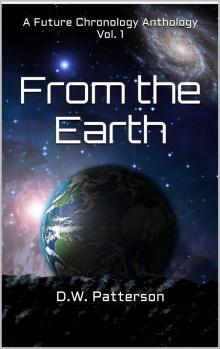 From the Earth: A Future Chronology Anthology
From the Earth: A Future Chronology Anthology Circle of Retribution: A Future Chronology Short Story (Future Chronology Series Book 6)
Circle of Retribution: A Future Chronology Short Story (Future Chronology Series Book 6)